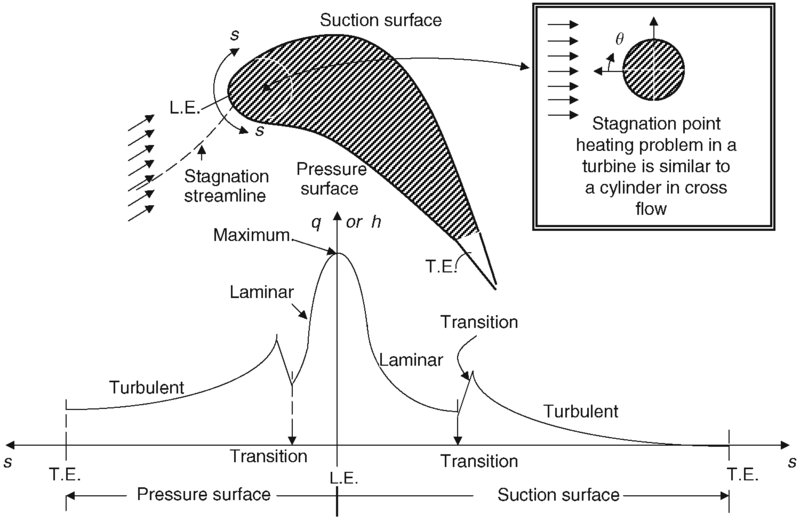10.2.4.2 Impingement Cooling
The turbine blade stagnation point, near the leading edge, represents the highest heat flux area of the blade. A typical heat flux distribution on a turbine blade (for a given free-stream turbulence intensity) is presented in Figure 10.41. “s” is a natural coordinate measuring the surface length from the leading edge on the suction and pressure surfaces. Due to longer length of the suction surface, as compared with the pressure surface, and a different location of the transition point on the two sides of the blade, the heat flux graph looks lob-sided.

 FIGURE 10.41 Schematic drawing of heat flux q (or heat transfer coefficient h) distribution on an uncooled turbine blade (for a free-stream turbulence intensity)
FIGURE 10.41 Schematic drawing of heat flux q (or heat transfer coefficient h) distribution on an uncooled turbine blade (for a free-stream turbulence intensity)
An important observation (from Figure 10.41) is that the highest heat flux occurs at the leading edge, or the stagnation point heating in a turbine blade is the most critical. The second message is the rapid rise of heat transfer due to boundary layer transition from laminar to turbulent. The third observation is the curvature switch from convex to concave on the suction and pressure surfaces, respectively, thus affecting the transition point on the blade. In the theory of curved viscous flows, a convex curvature has a stabilizing effect on the ...
Get Aircraft Propulsion, 2nd Edition now with the O’Reilly learning platform.
O’Reilly members experience books, live events, courses curated by job role, and more from O’Reilly and nearly 200 top publishers.

